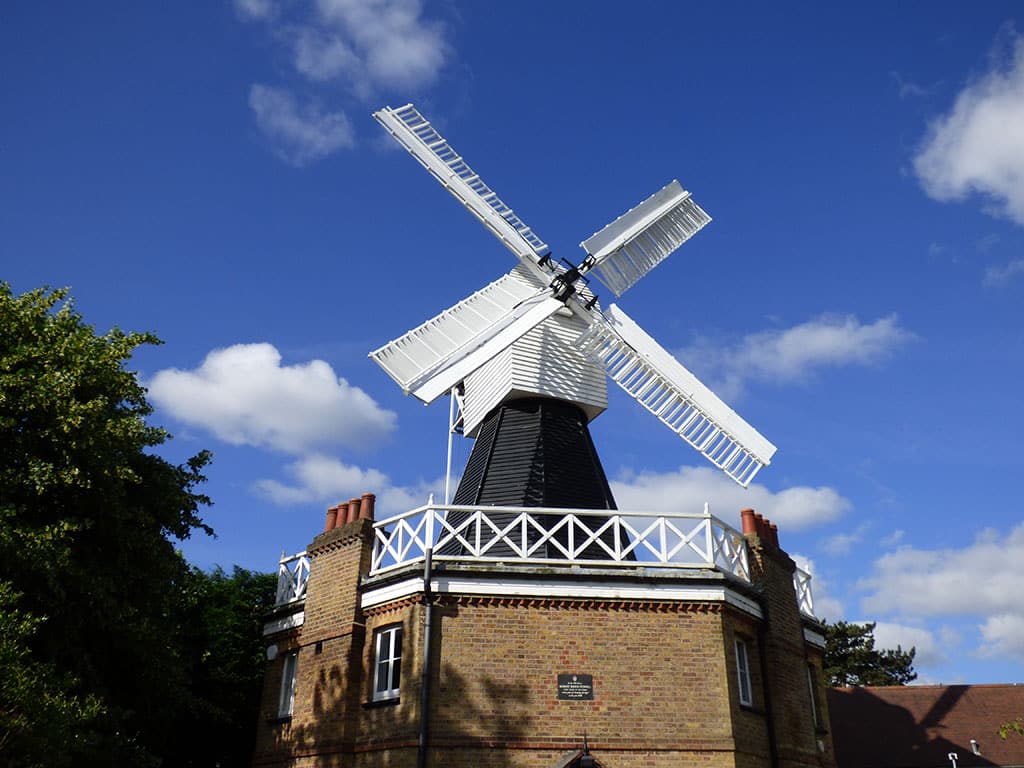Possibly the most famous French Impressionist artist, Claude Monet painted some of his finest works of art not in France but in the UK capital.
Monet was fascinated by sunrises and his painting ‘Impression Sunrise’, depicting his hometown port of Le Havre, gave the name to the movement and Impressionism was born. He painted several pictures of sunrises over the mighty Thames and the story of how he came to be in London is fascinating.
Monet moved to London to escape being conscripted into the army in the Franco-Prussian war in 1870. He and his family originally lived in modest lodgings at 11 Arundel Street, near Victoria Embankment. They then moved to Kensington High Street into a property which is now a burger restaurant!
Monet loved London and he was fascinated by the smoke and fog which distorted and merged building lines and natural features. The industrial revolution was at its peak in these years and Monet succeeded in conveying what he saw onto canvas in the most extraordinary way.
Other French artists, also fleeing from the war, landed in London and Monet met with his friend Pissarro, his mentor Charles-Francois Daubigny and the Parisian art dealer Paul Durand-Ruel frequently to discuss the emergence of a new, innovative style of art which was later called Impressionism. So, it is possible that London can claim that the movement was born here, but undoubtedly the French would dispute that!
After the war, Monet went back to France but returned to London for repeated and sometimes lengthy stays. By then, he was rich and famous and usually stayed at the Savoy Hotel in the Strand. This was his most productive period, and he painted more than 100 views of the city in what is known collectively as his Vue de Londres.
The Courtauld Institute is located just 300 metres from the Savoy Hotel and is currently home to The Griffin Catalyst Exhibition Monet and London, Views of the Thames. Monet always wanted to bring his London pieces together in one exhibition which has never happened until now. The biggest collection of this incredible artist’s work in London for 120 years is on display until February 2025.
Serial killers
On the other side of the Thames, but not far away, is a more gruesome opportunity to while away an hour or two.
In the railway arches beneath London’s busiest station, Waterloo, a world-touring exhibition is waiting to give visitors an insight into the dark world of serial killers.
We are all scared and fascinated in equal measure when we hear of the crazy killing sprees that various people have embarked upon over the years. Jack the Ripper is perhaps the most famous in London’s past, but this interactive exhibition brings things much more up to date with an insight into the dastardly deeds of more recent murderers like Manson, Bundy and Dahmer.
This well-located exhibition in the vaults offers visitors the opportunity to see hundreds of original artefacts including documents and drawings of the most famous serial killers in their own hand. You can step into reincarnations of famous crime scenes and investigate the investigators and their methods as you walk through the suitably lit railway arches.
The organisers actively encourage those with a ‘natural affinity to the unusual, the daring and the unknown’. Only for the brave!
Wimbledon Common
There is a large piece of south west London that features daily in the life of your columnist. As a dog lover and owner, he is forever finding new walks in this amazing expanse of countryside with his Portuguese Water Dog, Jessie.
Strangely, it is perhaps most famous for The Wombles but, to date, verified sightings are rare! These furry little friends were the inspiration of children’s writer Elisabeth Beresford who died in 2010. Her many books came to life in the 1970s BBC TV series narrated by comedy actor Bernard Cribbins and, in many ways, marked the start of a recycling culture which continues to this day.
The Common is much larger than most people think, covering an area of some 1140 acres (460 hectares) and includes Putney Heath and Putney Common. Most of the area is a Site of Special Scientific Interest and English Nature works with the elected Conservators to ensure the area is maintained and managed. Horse riding Park Rangers, similar to those in Central Park, New York City, patrol the entire area making it a safe place for the local population and their families.
Wimbledon Common is the largest expanse of heathland in London with an area of bog and flora that is rare in the region. London clay lies beneath, creating very muddy conditions in winter. There are several large lakes or ‘ponds’ with vast tracts of mature, mixed, mostly deciduous woodland. Stag beetles, herons, badgers, and squirrels proliferate, living happily alongside their fictional friends from children’s TV!
The area is very special with no development or housing permitted. In 1864, the Lord of the Manor, Earl Spencer (the ancestor of Princess Diana), attempted to obtain permission through Parliament to enclose the Common and build a house, but, thankfully, this was refused and the area remains unspoilt.
There is an ancient Roman well deep within the Common and right in the centre is a beautiful, well-preserved windmill. At this very place, Robert Baden-Powell, founder of the scouting movement, wrote Scouting for Boys which was published in 1908. It is easy to see how such a location could have inspired this worldwide phenomenon.
There are two golf courses within the Common and a tributary of the mighty Thames, Beverley Brook, runs along the western edge. Part of the Common known as the Plain was used as one of 10 air bases to protect London during World War One.
Park Runs take place most weekends, there are annual book fairs and funfairs and the whole Common provides massive amenity to the local area which includes several blocks of flats with little or no outside space.
All of this and just five miles away from the bright lights and busy streets of London’s Theatreland and the West End!
Richard Lamberth leads parallel lives with homes and business interests in London and Portugal. He provides consultancy services to leading businesses in insurance and financial services, property and media sectors. He has four sons, two dogs and enjoys a busy family life. He likes swimming, keeping fit and an outdoor life.
londoncalling@portugalresident.com

























